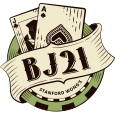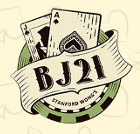Half middles and reverse middles

King Yao is the author of Weighing the Odds in Hold‘em Poker, and Weighing the Odds in Sports Betting. He uses his experience from making millions in financial derivative markets and translates it into gambling. Since he left his trading position in 2000, he has been playing poker and betting on sports. He travels to Las Vegas frequently, especially during football season.
Let’s discuss sports betting. All sports bettors should know the information herein. You should not be betting online or anywhere else without this fundamental knowledge.
Half middle
A half middle is a middle where one or both bets are on a full point spread number instead of a half point. The game can potentially land on a number where one side wins but the other side is a push.
Here is an example of a half middle. The Bears are playing the 49ers.
- Bet 1: Bears -2.5 price is -105, risking $105 to win $100
- Bet 2: 49ers +3 -105, risking $105 to win $100
If the Bears win by exactly 3 points, you win the bet on Bears -2.5 and push on the bet on the 49ers +3.
Here is a table with a probability distribution and results.
| Result of Game | Prob. | Bears | 49ers | sum |
|---|---|---|---|---|
| Bears win by 4 or more | 45% | +$100 | -$105 | -$5 |
| Bears win by exactly 3 | 10% | +$100 | $0 | +$100 |
| 49ers cover +2.5 | 45% | -$105 | +$100 | -$5 |
The EV of the two bets combined equals:
= (45% x -$5) + (10% x +$100) + (45% x -$5) = +$5.50
Reverse middle
A reverse middle is the opposite of a middle. In a reverse middle, you are hoping the game does not land in the middle of two different numbers. A middle by itself is not a profitable bet. Profitability depends on the point spread, the odds, and the probability of the game landing on certain numbers. This means it is possible for the other side of the middle — a reverse middle — to be profitable.
Here is an example of a reverse middle with positive EV. The Knicks are playing the Bulls.
- Bet 1: Knicks -5.5 +100, risking $100 to win $100
- Bet 2: Bulls +5 +110, risking $100 to win $110
The only way you lose with this combination of bets is if the Knicks win by exactly 5 points. If the Knicks win by exactly 5 points, you lose the bet on Knicks -5.5 and push on the bet on the Bulls +5. In this example, if you assume the Knicks will win by exactly 5 points 4% of the time, then the combination of the two bets has positive EV.
Here are the probability distribution and results.
| Result of Game | Prob. | Knicks | Bulls | sum |
|---|---|---|---|---|
| Knicks win by 6 or more | 48% | +$100 | -$100 | $0 |
| Knicks win by exactly 5 | 4% | -$100 | $0 | -$100 |
| Bulls cover +4.5 | 48% | -$100 | +$110 | +$10 |
The EV of the two bets combined equals:
= (48% x $0) + (4% x -$100) + (48% x $10) = +$0.80
The reverse middle has a positive EV of +$0.80. The reverse middle does seem riskier than a middle because the reverse middle has the chance of losing big. Most people avoid reverse middles because they cannot stand to lose big if the game ends in the middle. If the situation is profitable, then sharp bettors should be able to take advantage of the reverse middle by correctly sizing their bets to fit within their own risk parameters.
Sometimes sportsbooks, whether they be brick-and-mortar as in Las Vegas or online, unavoidably have reverse-middle positions when they move lines and take bets on both sides. Bettors with their combined middle position have positive EV against a sportsbook in some games. But often the vig on both sides allow a sportsbook’s reverse middle position to be profitable but risky.
This is part of an occasional series of articles.
Excerpted with permission from the e-book version of Weighing the Odds in Sports Betting by King Yao, edited for this format.











Please log in or register to leave a comment